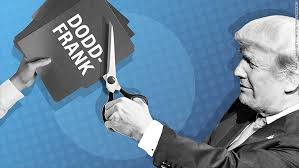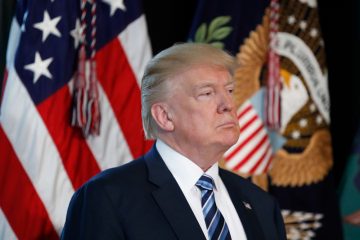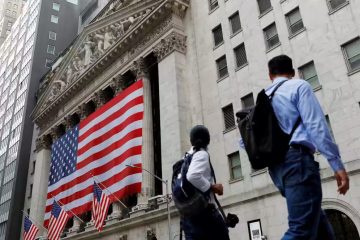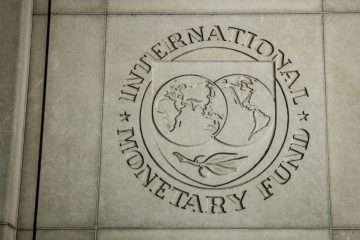Is Dodd-Frank Crippling Banks or Saving Them?

When President Trump took office in November, one of his biggest promises to the finance industry was that he would roll back the Obama-era legislation known as Dodd-Frank, which imposed additional regulation on banks in the name of avoiding a repeat of the 2008 financial crisis.
As a presidential candidate, Trump told Reuters that the legislation made it “impossible for bankers to function.” Today, with Trump backed by a Republican majority in the House and the Senate, major change seems very likely, and the GOP is attempting to pass a bill called the Financial Choice Act that will repeal most of Dodd-Frank.
The House passed the bill in June, and the legislation now awaits action in the Senate, where there is reportedly some support from Democrats for offering regulatory relief to the banking industry.
With repeal a real possibility, it’s worth looking back at Dodd-Frank and asking: What worked, and which parts might be worth keeping? We asked four experts to weigh in on four of the most contentious facets of the Dodd-Frank legislation.
Capital Requirements
There’s widespread disagreement about the underlying causes of the financial crisis and the necessity of the regulations Dodd-Frank encompasses. Still, there is a general consensus among academics that capital requirements, which Dodd-Frank toughened, are a key tool for lessening the potential damage of a financial crisis.
Capital requirements set the amount of assets a bank must set aside to provide a cushion in case of potential trouble. This liquidity is a buffer that absorbs losses, enabling banks to meet obligations including covering losses on investments or other unexpected cash outflows.
When things began to unravel on Wall Street in 2007, many of the largest institutions had far too little capital in reserve, says Lawrence J. White, former director of the Economic Policy Office in the Antitrust Division of the Department of Justice, and now a professor of economics at New York University’s Leonard N. Stern School of Business. A study by the International Monetary Fund concluded, “A capital ratio of 15% in 2007 would have erased the need for capital injection in 55% of cases within the United States.”
Unfortunately in 2007, the average capital ratio for the “big six” financial institutions (JPMorgan Chase, Citigroup, Bank of America, Wells Fargo, Goldman Sachs and Morgan Stanley) hung below 8%. As a result, the federal government had to step up and provide a huge financial backstop.
Dodd-Frank requires banks conducting basic banking activities to keep a minimum risk-based capital ratio (regulatory capital divided by risk weighted assets) of 8% and a minimum leverage ratio (regulatory capital divided by average total assets) of 4%. Banks that take part in more complex activities like securities trading need a minimum risk-based capital ratio of 10% and a minimum leverage ratio of 5% according to Moody’s Analytics.
Defenders of Dodd-Frank think those levels are appropriate and prudent. Reformers who back the Choice Act want to remove those requirements for many banks, keeping only the 10% leverage ration on some banks.
How “capital” is defined and what the capital ratio should be are closely related, according to Alan Blinder, former vice chairman of the Board of Governors of the Federal Reserve System between 1994 and 1996 and a professor of economics and public affairs at Princeton University.
A looser definition of capital warrants a higher capital ratio, Blinder says. “In the bad old days, bankers and their accountants and lawyers devised all sorts of securities that they claimed were ‘capital’ and often the regulators would just say ‘Okay, we’ll let you count that as capital,’” Blinder says.
Blinder said new capital standards are much tougher on what can be considered “capital,” but hybrid instruments still exist or can be invented. One simple example of such an instrument is preferred stock, which is a kind of hybrid between a stock and a bond. “Preferred stock has a dividend that’s sort of guaranteed, but not quite guaranteed. That’s why it’s not a bond,” Blinder says. “But having a stated dividend yield distinguishes it from common stock.” So should preferred stock be counted as part of the bank’s capital or should it not? Blinder asks, rhetorically. Because definitions aren’t always cut and dried, he adds, regulators need to stay alert to those trying to access or create loopholes.
The Volcker Rule (Proprietary Trading)
The Volcker rule, named after its advocate, former Federal Reserve Chairman Paul Volcker, bars short-term proprietary trading of securities, derivatives, commodity futures and options. It was based on the premise that banks shouldn’t gamble away their federally insured deposits, and on the idea that preventing such trading would curtail risky behavior.
The Choice Act, sponsored by House Financial Services Committee Chairman Jeb Hensarling, will repeal the Volcker Rule completely, according to a Bloomberg report.
The rule effectively hurts the bottom lines financial institutions like commercial banks that depended on these trades to make profit. And critics say that the rule goes too far. White notes that AIG was the only financial institution that put itself in grave danger using these practices.
“It is difficult to find systematic evidence from the recent crisis that involvement in proprietary trading increased the risk of failure,” wrote Randall S. Kroszner, a former member of the Board of Governors of the Federal Reserve and professor of economics at the University of Chicago Booth School of Business, in aa recent academic paper. “In the United States, the major banks that collapsed did so primarily because of high exposure to mortgages, not due to proprietary trading.”
Another problem with the Volcker rule, argues Blinder, is that there isn’t a clear operational definition of proprietary trading. What can be considered day-to-day operations to one person can be viewed as proprietary trading by another. It is very difficult for regulators to distinguish risky gambling from hedging or market making, Blinder says.
There isn’t much data to show whether banks have been harmed by the rule, according to Blinder. However, Kroszner writes that the rule could bring unintended consequences such as a reduction in liquidity and an increase in bid-ask spreads (the difference between the ask price and bid price for an asset). A higher bid-ask spread means higher transactions costs for customers, and reduction in liquidity can make it harder for banks to meet short-term obligations and quickly provide customers with currency.
The Orderly Liquidation Authority
Blinder admits it “wasn’t completely crazy” to eliminate the Volcker Rule. But he remains staunchly opposed to the repeal of the Orderly Liquidation Authority (OLA). The Financial Choice Act is currently set to “end bailouts once and for all” according to Hensarling, by eliminating the OLA, a tool given to federal authorities to use in times of financial crisis .
The OLA, defined in Title II of Dodd-Frank, “was among the most widely supported and bipartisan portions of the bill, passing the Senate by a vote of 93 to 5,” but has become more controversial in recent years, wrote economist Aaron Klein in “A Primer on Dodd-Frank’s Orderly Liquidation Authority” for the Brookings Institute.
Blinder seems to thinks its a misnomer to describe the powers granted in the OLA as a government bailout. “When Lehman Brothers was teetering on the brink, [then-Fed Chairman] Ben Bernanke and [then-Treasury Secretary] Hank Paulson had two basic choices, both of which were terrible,” Blinder said. “The one they chose was to just let [Lehman] go to bankruptcy court. The other was to bail it out with taxpayer money.”
The OLA establishes a third, intermediary approach. The government, using the FDIC (and potentially Federal Reserve money), can take control of the failing financial institution and slowly wind it down. This may require advancing some money to pay off creditors, but it’s more of a temporary loan that must be paid back, according to Blinder.
Capital requirements decrease the odds of financial institutions having to be liquidated because it could not absorb the losses, while the OLA answers the question of “what happens if that’s not enough,” Blinder says. He likens capital requirements to setting the height of a dyke in order to prevent impending floods.
Regulating Small Banks
Among the biggest proponents of removing Dodd-Frank legislation are those who believe that such regulation led to the death of small banks and the dominance of “too big to fail” institutions.
Though the cost of sifting through all the new regulation has impacted small banks, capital requirements haven’t made too much of a difference, according to Blinder. “Smaller banks have historically always held more capital relative to their assets than bigger banks,” Blinder says.
The growth of small banks has slowed, but some argue that Dodd-Frank isn’t the main culprit. “Look at the graph of small bank consolidation over the last 40 years,” says Klein, policy director of the Center on Regulation and Markets within the Brookings Institute. “You will not see any change in the trend over Dodd-Frank’s adoption.”
Klein connects the decrease in small banks to a much larger trend, driven by the removal of restrictions on multistate banking that were in effect until the 1990s and by technological changes that benefited larger banks.
“I think Dodd-Frank was too strict in the web of rules that it applied to” smaller banks, Blinder says. “At least some small banks are not— by any stretch of the imagination— systemic risks.” Ideally Congress should go back and lift some of the burdensome regulation on small and medium banks by redefining a large systemic bank, according to Blinder. Defining any bank with more than $ 50 billion in assets to be “systemic”—that is, big enough to threaten the financial system—was a mistake, Blinder says. The threshold should be much higher—around $ 150 billion, according to Blinder.
“It’s not too late to [fix Dodd-Frank],” Blinder says. “If instead of the Choice Act, the Republicans would bring forward a piece of legislation squarely at the small banks, not the big banks…I think they could get an overwhelming bipartisan vote, easily.”








